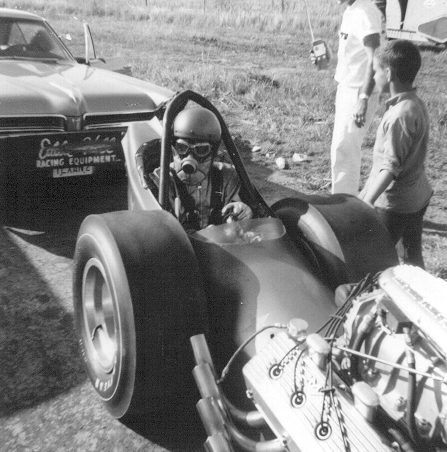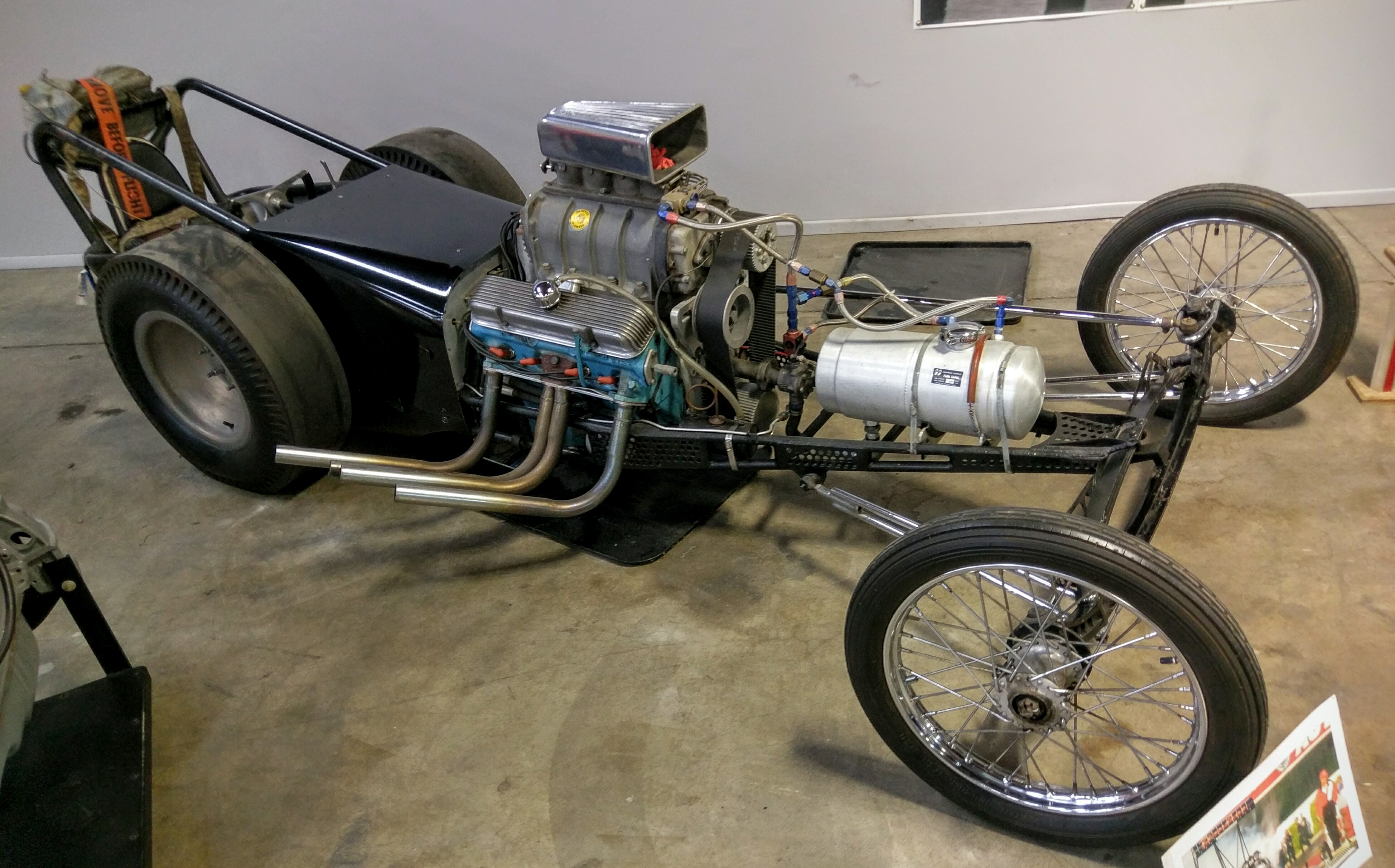Front engine dragster on:
[Wikipedia]
[Google]
[Amazon]

 The front-engine dragster is a type of racing car purposely built for drag racing. Commonly known as a "rail", "digger", or "slingshot", it is now considered obsolete, and is used only in
The front-engine dragster is a type of racing car purposely built for drag racing. Commonly known as a "rail", "digger", or "slingshot", it is now considered obsolete, and is used only in

 The front-engine dragster is a type of racing car purposely built for drag racing. Commonly known as a "rail", "digger", or "slingshot", it is now considered obsolete, and is used only in
The front-engine dragster is a type of racing car purposely built for drag racing. Commonly known as a "rail", "digger", or "slingshot", it is now considered obsolete, and is used only in nostalgia drag racing Nostalgia drag racing is a form of drag racing using cars from the 1950s, 1960s and lately the 1970s.
The cars raced are a mixture between restored originals, while others are re-creations of older cars. Today, nostalgia drag racing events are held ...
. Wheelbase
In both road and rail vehicles, the wheelbase is the horizontal distance between the centers of the front and rear wheels. For road vehicles with more than two axles (e.g. some trucks), the wheelbase is the distance between the steering (front ...
s ranged from .
History
Dragsters were first built with their engines in front simply because their builders followed the front-engine standard of production cars. However, they did not use (and current dragsters still do not use) any form of suspension. Because of this, these types of vehicles were prone to becoming unstable at speed. This is due to their making , plus having poor tire technology, short wheelbases, and very light weight. (This was demonstrated to extremes in Fuel Altereds.) The driver sits angled backward, over the top of the differential in a cockpit situated between the two rear tires, a design originating withMickey Thompson
Michael Lee "Mickey" Thompson (December 7, 1928March 16, 1988) was an American auto racing builder and promoter.
A hot rodder since his youth, Thompson increasingly pursued land speed records in his late 20s and early 30s.
in 1954, as a way of improving traction. This position led to many drivers being maimed when catastrophic clutch failures occurred.
Introduced with the start of organized drag racing, they were limited by the availability of traction from their rear tires or "slicks". A number of dragsters with four rear drive wheels were attempted as well, including cars by Art Chrisman (along with his brother, Lloyd, and partner Frank Cannon), Bill Coburn, and Eddie Hill. (Coburn and the Chrisman brothers used twin engines, also.)
Push starts were necessary until National Hot Rod Association
The National Hot Rod Association (NHRA) is a drag racing governing body, which sets rules in drag racing and hosts events all over the United States and Canada. With over 40,000 drivers in its rosters, the NHRA claims to be the largest motorspo ...
(NHRA) mandated self-starters in 1976. After burnouts, cars would be pushed back by crews; this persisted until NHRA required reverse gears in 1980.
The slingshot produced a number of fatal wrecks in the 1960s, including Mike Sorokin's and John Mulligan's (months after suffering severe burns in a fire at the Nationals in 1969). Clutches, bell housings, blowers, and engines exploded, with e.t.s hitting 6.43 seconds by the end of 1969, a pass recorded by Mulligan to qualify #1 at the Nationals. Other accidents included a flip (what today would be called "blowover") by Jim Nicoll at the 1970 Nationals after a clutch failure.
The slingshot's advantages, putting weight over the rear tires, now served to cause the front end to lift, as tire technology improved, to the point ballast
Ballast is material that is used to provide stability to a vehicle or structure. Ballast, other than cargo, may be placed in a vehicle, often a ship or the gondola of a balloon or airship, to provide stability. A compartment within a boat, ship ...
, sometimes hundreds of pounds' worth, had to be added over the front axle, while others, like Ronnie Scrima Ronnie Scrima is an American dragster and funny car chassis builder.
He was responsible for the streamliner slingshot dragster '' Scrimaliner'' in 1964.
After Logghe Bros. (based in Detroit) proved unable to keep up with demand, a funny car ch ...
(on his ''Scrimaliner
''Scrimaliner'' is a streamliner slingshot dragster.
Designed by Ronnie Scrima Ronnie Scrima is an American dragster and funny car chassis builder.
He was responsible for the streamliner slingshot dragster '' Scrimaliner'' in 1964.
After Lo ...
'') and Tony Nancy, would mount a winglet.
The drawbacks led to several attempts at rear-engined cars, but the rail was only supplanted by the rear-engined type (which is now standard) when Don Garlits introduced '' Swamp Rat XIV'' in 1971. He designed the car while in hospital, having suffered from severe injuries caused by an exploding clutch.
References
{{DEFAULTSORT:Front Engine Dragster Drag racing cars